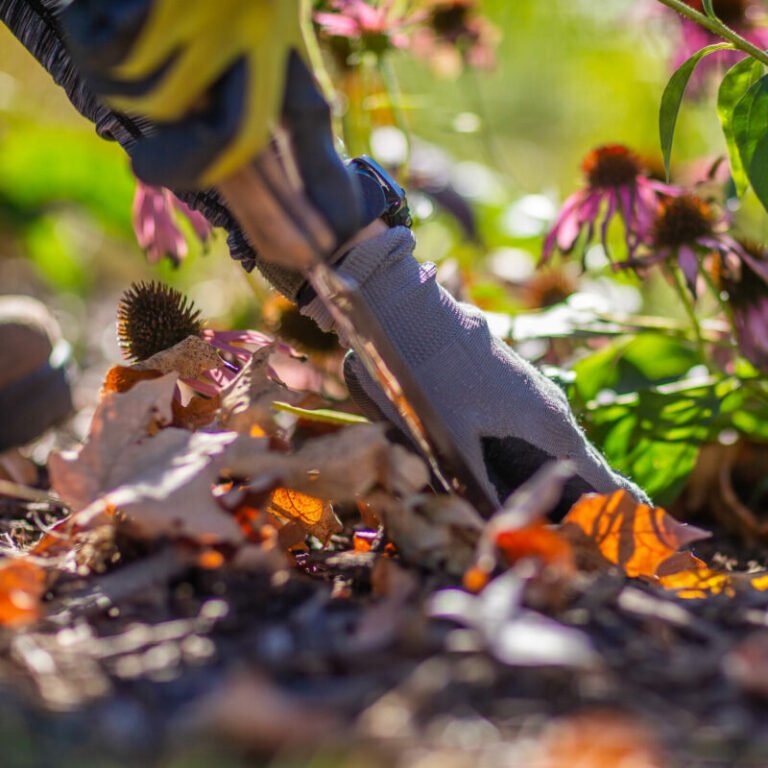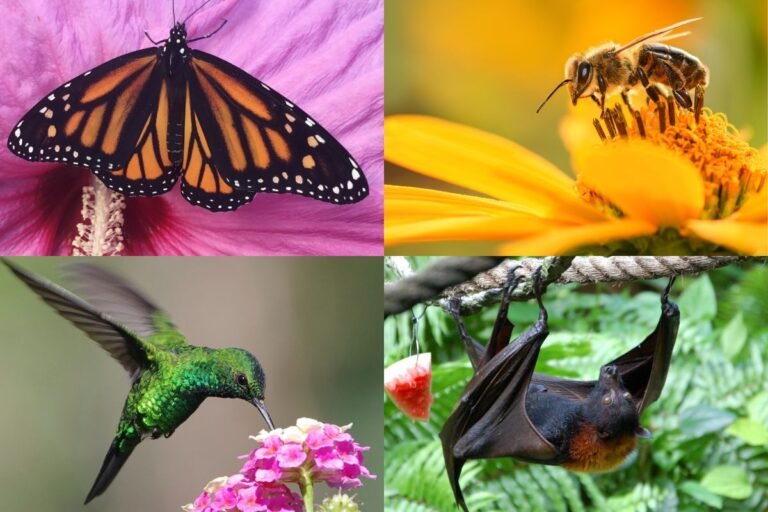Pollinators like bees and butterflies need water to survive. Their search for water is as vital as their quest for nectar.
Imagine a world where flowers bloom in abundance but there are no bees to dance from petal to petal. This is the stark reality we face if pollinators lack access to water sources. These tiny creatures play a crucial role in our ecosystem, aiding in the production of fruits, vegetables, and seeds.
They require water for various life functions, much like all living organisms. Yet, their need for water goes unnoticed often. This introduction highlights why water is as necessary as flowers for pollinators. We’ll explore the symbiotic relationship between water sources and pollinators. Our focus will illuminate their critical role in our food supply and overall environmental health. Let’s dive into the significance of ensuring that these indispensable allies have the water they need to thrive.
The Plight Of Pollinators
The Plight of Pollinators is an urgent matter. These creatures face many threats. Without them, our ecosystems could collapse. Let’s explore why their survival hinges on water sources.
Declining Populations
Bees, butterflies, and other pollinators are in trouble. Their numbers are dropping fast. Loss of habitat and water pollution play big parts. Climate change adds to their struggle.
Importance To Ecosystems
Pollinators are key to healthy ecosystems. They help plants reproduce. This leads to more fruits and seeds. Animals and humans rely on these for food.
- Pollination: It’s how plants breed. Without it, many plants can’t make seeds.
- Food webs: Pollinators support them. They’re part of a bigger cycle.
- Biodiversity: More pollination means more plant types. Biodiversity keeps nature in balance.

Pollinators’ Dependence On Water
Pollinators such as bees, butterflies, and birds play a crucial role in the ecosystem. They help in the reproduction of plants by transferring pollen. Water is vital for these creatures, not just for drinking but also for their habitats. Let’s explore why these invaluable species depend on water sources.
Hydration Needs
Pollinators need water to survive. Like all living beings, they require it for basic physiological functions. Water aids in digestion, temperature regulation, and nutrient distribution within their bodies. A lack of water can lead to dehydration, affecting their health and ability to pollinate.
Water For Habitat
Water bodies are integral to pollinators’ habitats. They provide a home for many plants that pollinators feed on. Wet areas also create microhabitats that support insect life. These zones contribute to biodiversity, offering pollinators food and shelter. Without these wet habitats, pollinators might struggle to find necessary resources.
Types Of Pollinators And Their Water Sources
Understanding the Types of Pollinators and Their Water Sources is crucial. Pollinators need water to survive. Different pollinators use different water sources. Let’s dive in.
Bees And Ponds
Bees love water. They use it for cooling their hives and feeding. Ponds are perfect for them. Why? Ponds offer clean water. Bees land on edges or floating debris to drink. Safe and easy.
- Ponds help bees stay hydrated.
- They cool their hives with water.
- Debris in ponds keeps bees safe while drinking.
Butterflies And Dew
Butterflies find water in dew. Early mornings are best. They sip dew from leaves and grass. Dew provides necessary moisture. No need for ponds or streams.
- Dew forms on leaves and grass.
- Butterflies drink early in the morning.
- Dew is a safe water source for them.
Both bees and butterflies rely on water. Bees prefer ponds. Butterflies use dew. Understanding these needs helps protect pollinators. Let’s ensure they have access to water.
The Role Of Water In Plant-pollinator Interactions
Water is a key player in the dance of plants and pollinators. This liquid life sustains both flowers and the creatures that visit them. Let’s explore how water impacts this vital relationship.
Nectar Production
Nectar, the sweet liquid in flowers, draws in pollinators. Water helps plants make nectar. Without enough water, nectar dries up. Pollinators then have less food. This can lead to fewer visits and less pollination.
- Plants need water to create nectar.
- More water often means more nectar.
- Pollinators rely on nectar as a food source.
Flower Health
Healthy flowers are a must for pollinators. Water keeps flowers vibrant and full of life. Well-watered plants grow more blooms. More flowers mean more homes for pollinators. Dry plants struggle to bloom. This can limit food and shelter for these vital creatures.
| Water Availability | Flower Health | Pollinator Attraction |
|---|---|---|
| High | Strong, healthy flowers | Increased visits |
| Low | Weak, fewer flowers | Decreased visits |
Impact Of Water Quality On Pollinators
Pollinators need clean water to survive. Just like us, they need it for drinking and cooling. But water quality can affect their health. Let’s dive into why it’s vital for these creatures.
Pollution Concerns
Water tainted with chemicals harms bees, butterflies, and birds. Pesticides and waste can poison them. When they drink, they can get sick or even die. We must keep water clean for them to thrive.
Safe Drinking Sources
Creating safe spots for pollinators to drink is key. Small ponds or bird baths work well. They should be shallow. Add stones or sticks for them to land on. This way, they can sip without drowning.
Remember, clean and accessible water helps pollinators stay healthy. And healthy pollinators mean a thriving ecosystem for us all.

Conservation Efforts To Protect Water Sources
Protecting water sources is key for pollinators. Pollinators need clean water to survive. Our efforts can help save their habitats. Let’s explore how we can protect these vital water sources.
Legislation
Lawmakers play a big role in protecting water sources. They pass laws to keep water clean for pollinators. These laws stop pollution and keep natural habitats safe. Everyone must follow these rules to help save our pollinators.
Community Initiatives
- Local groups work together to clean rivers and lakes.
- They plant flowers and trees near water. This helps pollinators.
- Communities teach people about pollinators. Knowledge is power.
Together, we can make a big difference. Small actions lead to big changes. Let’s keep our water clean for pollinators.
Creating Pollinator-friendly Water Features
Bees, butterflies, and birds play a crucial role in our ecosystems. They need water to survive, just like us. Let’s explore how to support these vital creatures by adding water features to our gardens.
Backyard PondsBackyard Ponds
Backyard ponds invite pollinators for a drink and a rest. A shallow edge allows them to land safely. Add rocks and plants for shelter. Keep the water clean for their health.
Watering StationsWatering Stations
Watering stations can be simple. Use shallow dishes with pebbles. Fill them with fresh water regularly. Place them around your garden. This helps pollinators stay hydrated and healthy.

The Future Of Pollinators And Water Conservation
Bees, butterflies, and other pollinators face a future where their survival hinges on two crucial elements: water and habitat. Water sources prove vital for these tiny creatures, as they not only quench their thirst but also play a key role in their complex ecosystems. The conservation of water resources is thus inseparable from the fate of pollinators. As we delve into the importance of water for these species, we must consider innovative approaches and societal involvement in safeguarding their future.
Research And Development
Scientific progress in understanding pollinator needs is ongoing. Experts focus on how water scarcity affects pollinators. They also explore ways to ensure water availability. Conservation techniques are being refined to support both pollinators and human needs.
- Study of pollinator-friendly water sources
- Development of sustainable irrigation
- Innovations in water reuse
Public Awareness
Educating communities about pollinators is key. People must learn the importance of these creatures and how to conserve water. Outreach programs and community projects play a role.
- Workshops on creating pollinator habitats
- Information campaigns on water-saving practices
- Community gardens with water-wise plants
Frequently Asked Questions
Why Do Pollinators Need Water Sources?
Pollinators require water for drinking and cooling themselves, especially on hot days. Water sources also help some species dissolve minerals and salts essential for their nutrition. Providing clean, shallow water sources can significantly benefit pollinators’ health and survival.
How Do Water Sources Benefit Pollinators?
Water sources offer more than hydration for pollinators. They serve as critical habitats for mating, feeding, and nesting for certain species. By ensuring water availability, we support the biodiversity and ecosystem services that pollinators contribute to, including pollination of food crops and wild plants.
What Types Of Water Sources Are Best For Pollinators?
Shallow water sources, like birdbaths with stones or marbles for landing spots, are ideal for pollinators. They prevent drowning and allow easy access to water. Incorporating native plants around these sources can also attract more pollinators by providing shelter and additional resources.
Can Pollinators Find Water In Urban Areas?
Yes, pollinators can find water in urban areas through man-made sources like birdbaths, puddles, and garden water features. Urban dwellers can support pollinators by creating small, pollinator-friendly water stations in their gardens or balconies, thus compensating for the lack of natural water bodies.
Conclusion
Pollinators need water sources to survive. This fact can’t be ignored. Gardens and farms depend on these tiny helpers. They rely on water just as much as they need flowers. By protecting water habitats, we help bees, butterflies, and others.
This ensures our crops and plants thrive. Remember, a simple birdbath or a puddle can make a big difference. Let’s make sure our fluttering friends always find the water they need. Your small steps count. They keep our environment buzzing with life.
Let’s all do our part.


